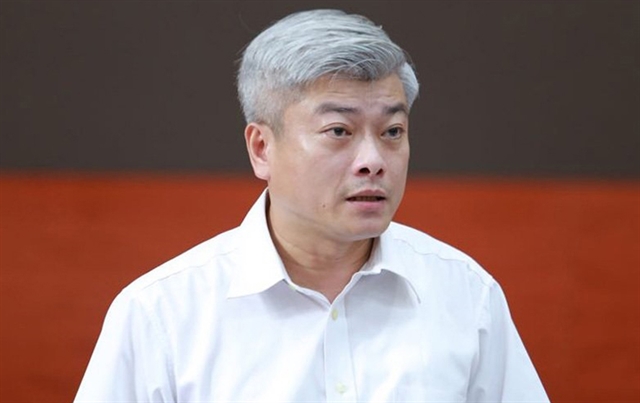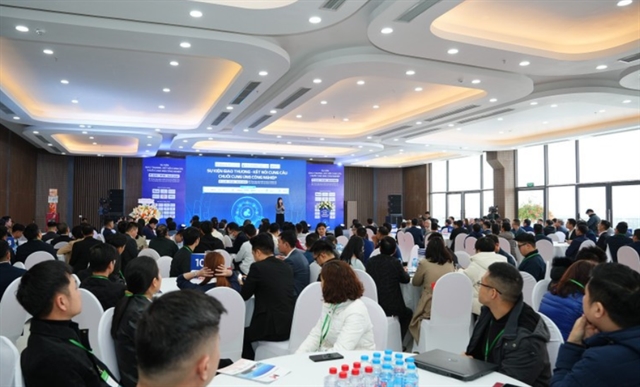 Environment
Environment

Deputy Director of Hà Nội’s Department of Natural Resources and Environment, Mai Trọng Thái, talks to Hà Nội Mới (New Hà Nội) newspaper about the capital city’s environmental protection efforts.

|
| Deputy Director of the Hà Nội Department of Natural Resources and Environment, Mai Trọng Thái. — Photo hanoimoi.com.vn |
Deputy Director of Hà Nội’s Department of Natural Resources and Environment, Mai Trọng Thái, talks to Hà Nội Mới (New Hà Nội) newspaper about the capital city’s environmental protection efforts.
Environment is a top concern of urban areas, including Hà Nội. Could you briefly explain the current situation of the capital city’s environment?
Through the sector’s review and assessment, you can see that the main source of environmental pollution in Hà Nội is water surface pollution of rivers, lakes and channels. Air pollution and pollution caused by untreated solid waste and household waste. The city is estimated to release around 900,000cu.m of waste water each day while the capacity of wastewater treatment facilities in the city has reached only 276,000cu.m, dealing with just 28.8 per cent of the waste water. The remaining wastewater has been discharged into rivers, lakes and channels, leading to environmental pollution, particularly rivers in the inner city such as Tô Lịch, Kim Ngư, Lừ, Sét and Nhuệ rivers.
Also, air pollution remains high, particularly in winter. According to the department’s figures, the air quality in the inner city in late 2020 and early 2021 was very bad, affecting local residents’ health. Pollution was mainly caused by PM10 and PM2.5 fine dust.
What has the city done to deal with these sources of environmental pollution?
The city has issued many documents on strengthening solutions to improve the quality of the environment focusing on defining and dealing with hot spots of environmental pollution, controlling sources of waste discharge, increasing inspections, and punishing environmental protection violators.
From 2017 to present, local environment management agencies fined 6,025 facilities for violating environmental protection regulations with total fines of over VNĐ63 billion (US$2.74 million). Meanwhile, inspectors from the municipal Department of Construction punished more than 53,000 construction projects for causing environmental pollution with a total administrative fine of nearly VNĐ100 billion (US$4.3 million).
The municipal People’s Committee has assigned relevant agencies to increase inspections and management over sanitation and environmental protection work along rivers and regularly operate wastewater treatment facilities to ensure waste water quality meets appropriate standards before being released into the environment.
These efforts have brought positive results: the collection rate of household and medical waste has reached 99 per cent and has basically brought pollution of water resources in the inner city under control. We also have 35 automatic air observation stations operating and have stamped out over 96 per cent of the use of honeycomb charcoal stoves.
Apart from positive results, what limitations in environmental protection does the city face?
There is still a lack of close coordination between relevant departments, agencies and authorities of districts and communes. Some units are still slow in implementing environmental protection plans and there is a shortage of environment management forces at the district and commune level, and funds to support environmental protection activities.
Hà Nội is in the process of strong urbanisation with a high volume of vehicles and construction projects, leading to an overload of emission, waste and waste water, seriously affecting the environment.
What will Hà Nội do in the future to handle these shortcomings and improve the quality of the environment?
Hà Nội will continue building its State management apparatus to manage the environment to fall in line with current regulations.
The city will focus on making a plan to protect the environment until 2030 with a vision towards 2050, incorporating socio-economic development planning. It will also implement a plan to collect and treat hazardous waste until 2025 with a vision to 2030.
Local authorities will increase inspection and supervision to prevent environment protection violations, particularly at traditional craft villages and industrial zones and strictly punish violators.
Hà Nội will also apply new technology in treating water surface pollution at lakes and rivers and develop a network of wastewater treatment facilities.
The city aims to complete the adjustment of the solid waste treatment plan with the goal of collecting and treating 100 per cent of household waste.
A waste-to-power plant in outlying Sóc Sơn District is expected to be put into operation this year with a capacity of 4,000 tonnes per day and a waste treatment plan at the Xuân Sơn landfill area in Ba Vì is scheduled for completion by 2020 with a capacity of 1,500 tonnes per day.
The city will increase the application of information technology in environment management and increase information dissemination to raise public awareness of environment protection. — VNS


.jpg)

